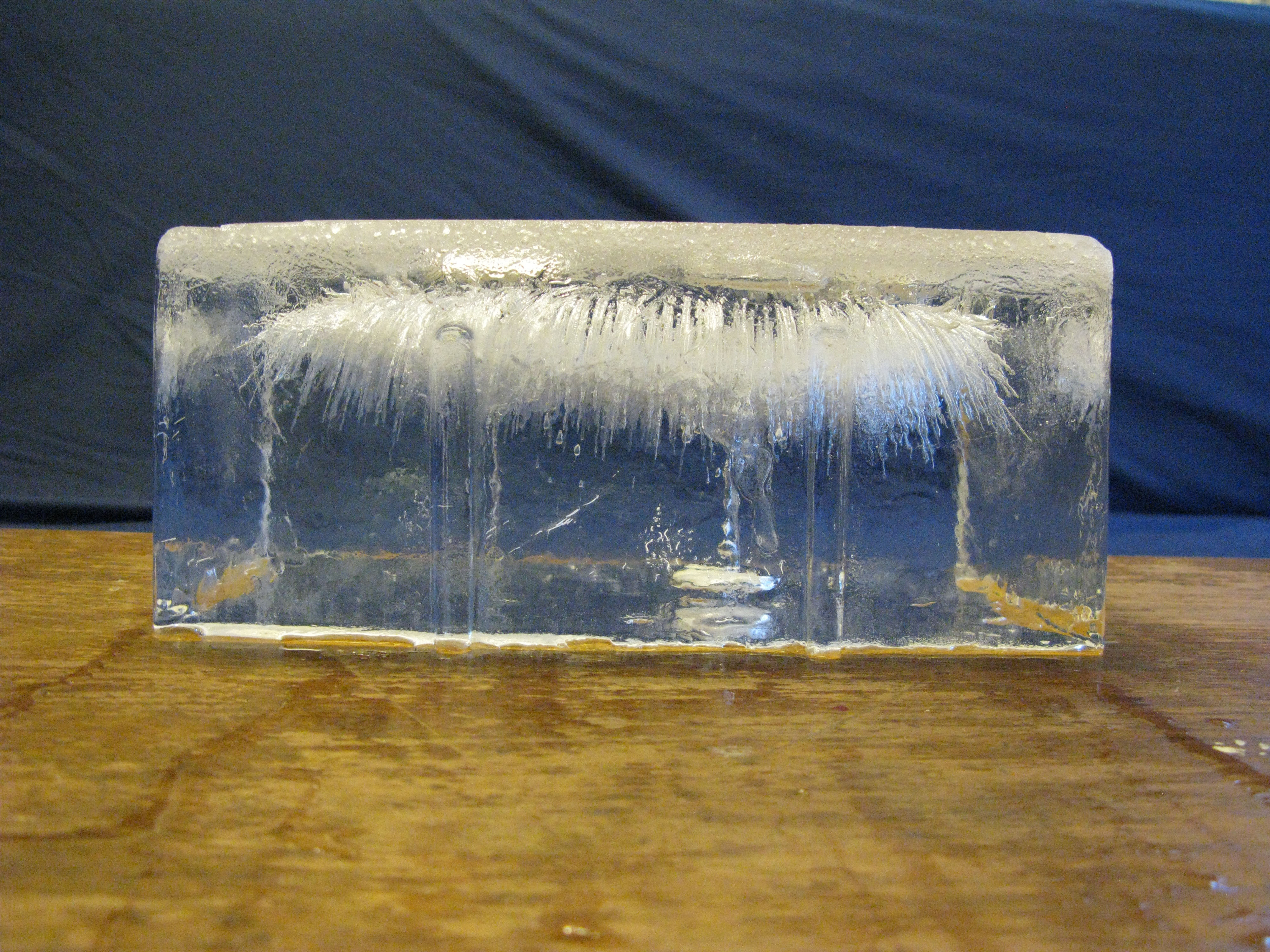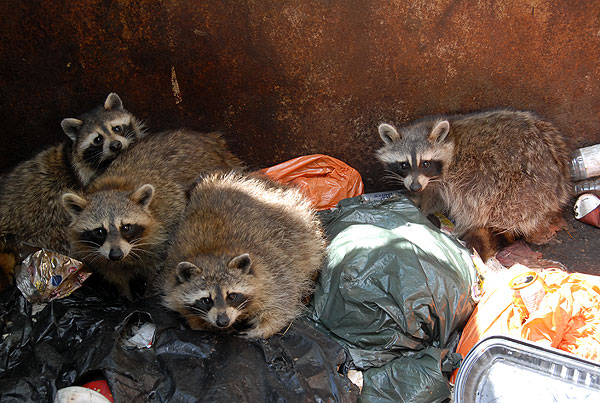Physicist: It doesn’t.
Carbon dating is the most famous form of “radiometric dating”. By measuring the trace amounts of radioactive carbon-14 (so named because it has 6 protons and 8 neutrons) in a dead something and comparing it to the amount of regular carbon-12 (6 protons and 6 neutrons) you can figure out how long it’s been since that sample was alive. Carbon-14 is continuously generated in the upper atmosphere when stray neutrons bombard atmospheric nitrogen (which is what most of the atmosphere is).
The reason carbon dating works is that the fresh carbon-14 gets mixed in with the rest of the carbon in the atmosphere and, since it’s chemically identical to regular carbon, gets worked into whatever is presently absorbing atmospheric carbon. In particular: plants, things that eat plants, things that eat things that eat plants, and breatharians. When things die they stop getting new carbon and the carbon-14 they have is free to radioactively decay without getting replaced. Carbon-14 has a half-life of about 5,700 years, so if you find a body with half the carbon-14 of a living body, then that somebody would have been pretty impressed by bronze.
Of course none of that helps when it comes to pottery and tools (except wooden tools). Not being made of carbon, we can’t carbon date them. Fortunately, the stuff ancient civilization leave lying around tend to be found in clumps called “middens”. A less sophisticated word for midden is “pile of garbage and often poo”.
Generally speaking, archaeologists make the assumption that if the grains in and around of a clay pot are, say, 8,000 years old, then the pot itself is roughly the same age. Which makes sense. If you had an ancient amphora sitting around, would you use it for fresh strawberry preserves? And before you answer: please do it. A life spent potentially confusing future archaeologists is a life well spent.
There are many different kinds of radiometric dating that are used to date things that are non-organic (which is part of how we determine the age of the Earth). They each rely on a couple of different (thoroughly verified) principles. First, that radioactive isotopes have a fixed half-life (totally independent of their environment). And second, that the elements they were before and after the radioactive decay have different chemical properties.

As water freezes and each molecule falls into place, atoms that don’t fit in the forming ice crystal are excluded. Impurities, such as dissolved air, are either forced out or concentrated in the last region to freeze. The same is true for any kind of crystal.
Crystals are regular lattices of atoms. And they’re picky. If an atom doesn’t interact chemically in the right way, then it won’t be incorporated into a forming crystal. For example, zircon (a crystal) is perfectly happy to incorporate uranium, but excludes lead. It so happens that uranium decays into lead with a half-life of 4.5 billion years. So if you grind up a zircon and measure the tiny amounts of lead vs. uranium, you’re measuring how long it’s been since that zircon formed. At that time there would have been zero lead in it.
Since carbon-14 has a half-life on the order of thousands of years, it’s useful for figuring out the age of organic materials that have been independent of the atmosphere for thousands of years. Since uranium-238 (the isotope comprising more than 99% of natural uranium) has a half-life of billions of years, it’s useful for figuring out the age of (among other things) zircons that crystallized billions of years ago. Want to date a woolly mammoth?: carbon dating. Want to date a planet?: uranium dating.
Radiometric dating generally involves tallying up trace amounts of material, so it’s not the sort of thing you do out in the field; you need a clean lab. So it was, after years of attempting to measure the age of the Earth (or, more specifically, the time since it was last molten) in a regular lab, that Clair Patterson bravely announced “Dudes and dudettes of science… anybody else notice all the lead in the air?” Turns out that burning gasoline, among its other little known deleterious effects, throws lead into the air. That’s not great: once everything on Earth is peppered with lead, it’s difficult for scientists to do their science. And, not for nothing, it’s also caused a thousandfold increase in lead contamination in the bodies (or bones at least) of everything that breathes and/or eats. If you’ve ever wondered why gasoline should be “unleaded”: that’s why.
This is the beauty of fundamental research: you never know what you’ll find when you start poking around.








please describe the matter in more simple language.
the assumption in the lead-uranium dating is that the uranium is universally distributed or globally, how this assumption came to be should be explained.
Some organic fossils such as dinosaur bones have been turned to rock, how do we date this. will Carbon dating still work?
finally which radiometric dating is the best one. Since the values we get are usually given in ranges, approximations and not exact dates.
A funny fail in Babylon 5 Thirdspace is when an alien ship is radio-carbon-dated to “at least a million years old”
@Elvince Ager
Fortunately, you don’t need to assume that uranium is distributed uniformly. Which is good, because it isn’t (otherwise we wouldn’t have uranium mines so much as places-we-felt-like-digging). Instead we just compare the ratios of “parent material” (like uranium) to “daughter material” (like lead).
Since dinosaurs all died out tens of millions of years ago, carbon dating isn’t a useful tool. It would be like trying to measure the distance to the Moon with a wooden ruler. It turns out that you don’t date dinosaur bones directly, you date the material that’s nearby.
And you’re right, you do end up with approximations. But lucky for us: math. The more approximations you have about something, the more exactly you know it overall.
Given the lengths of time usually involved in radiometric dating, especially uranium dating, I find it remarkable that scientists are able to get the dates down to as small a range as they do. An error margin of 2 million years when you’re dating things over 2 billion years old, aka less than 2%, is absurdly accurate.
It truly amazes me how many intelligent people believe and buy into these archeologist, geologist,and scientist speculations and theories!! Carbon dating can’t be proven to be accurate or even work! I guess they could possibly find some documentation from decades,centuries, or even a millennial or two telling when and where something was buried that they could dig up to test their dating methods and theories but even after all of that they still couldn’t know if it’s accurate or how old something is beyond that because they don’t know how our atmosphere and oxygen levels were at that time so how can they know and determine carbon build ups!! They humor and enrage me at the same time when they try to explain their speculations and theories as facts!! Scientist don’t know or even have a single clue what was happening or how old anything is past about 10000 years ago and I bet that can’t even get that far back, they will tell you that sure they can through their translations but then again they can’t even prove how accurate they are either! It doesn’t take much common sense or intelligence to realize that the majority of what they claim to know and pass off as facts is impossible for them to know much less prove! They try and try to discredit and debunk re!igion and God but they can’t! Just like they say Noah, the ark, and a great flood is myth, stories, and untrue then turn around and tell you all about a ice and stone age that happened millions of years ago that they can’t prove or produce a single piece of actual real evidence of but yet there’s sea shells on top of the tallest point of the Himalayas that proves they were under water at sometime in the past so there had to be a great flood!!! Why haven’t they tried to put a date on when it happened and how old them sea shells are! Like astronomers for example explaining objects and other things they have taken pictures of or recording a little video with their telescopes in outer space but yet the people that are in the space station right now has set a record for being the farthest from earths surface (250 miles) that any other space craft occupied by a human being other than the moon expeditions which would of been impossible to have done in the late 60’s. There’s no way that human beings could of carried enough fuel or oxygen with them to make a 500000 mile round trip back then!!
If C14 is only found in things once alive, how are they dating diamonds by Carbon Dating?